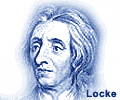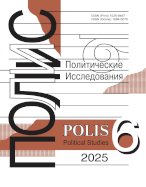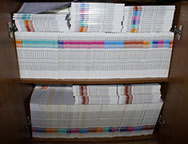The Images of States in International Relations:
Mechanisms of Transformation
DOI: 10.17976/jpps/2003.03.05
Kiselyov I.Yu. The Images of States in International Relations: Mechanisms of Transformation . – Polis. Political Studies. 2003. No. 3. https://doi.org/10.17976/jpps/2003.03.05
Basic mechanisms are analyzed, that change the states’ behaviour on the international scene in connection with the changes of their images. In this, the author proceeds from the thesis that decisions in the field of foreign policy are determined both by the values that the states attribute to social objects and by those states’ perception of themselves (Self-images). A state’s ideas of itself are subject to almost no changes, they resist to changes. Therefore states’ perception and evaluation of the actions of one another on the international scene since the end of the cold war either remain unchanged, or undergo changes of just a situational, superficial character.
 Full Text (электронная версия)
Full Text (электронная версия)See also:
Malkov S.Yu., Korotayev A.V., Isayev L.M., Kuzminova Ye.V.,
On methods of estimating current condition and of forecasting social instability: attempted quantitative analysis of the events of the Arab spring. – Polis. Political Studies. 2013. No4
Zamyatin D.N.,
Geopolitics: Major Problems and Results of Development in the 20th Century. – Polis. Political Studies. 2001. No6
Safonov M.V.,
Modern Approaches to the Study of International Institutions (With Studies of the “Big Eight” as Instance). – Polis. Political Studies. 2003. No3
Nisnevich Yu.A., Rozhich P.,
Lustration as instrument of counteracting corruption. – Polis. Political Studies. 2014. No1
Lyublinsky V.V.,
The Political Dimension of Social Inequality and Poverty (Comparative Experience). – Polis. Political Studies. 2015. No5




.jpg)






 print
print.jpg)
.jpg)